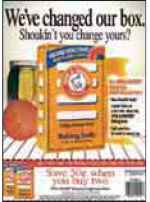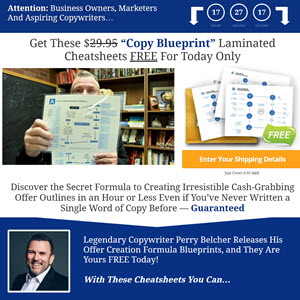Objectives of ConsumerOriented Sales Promotion
As the use of sales promotion techniques continues to increase, companies must consider what they hope to accomplish through their consumer promotions and how they interact with other promotional activities such as advertising, direct marketing, and personal selling. When marketers implement sales promotion programs without considering their long-term cumulative effect on the brand's image and position in the marketplace, they often do little more than create short-term spikes in the sales curve.
Not all sales promotion activities are designed to achieve the same objectives. As with any promotional mix element, marketers must plan consumer promotions by conducting a situation analysis and determining sales promotion's specific role in the integrated marketing communications program. They must decide what the promotion is designed to accomplish and to whom it should be targeted. Setting clearly defined objectives and measurable goals for their sales promotion programs forces managers to think beyond the short-term sales fix (although this can be one goal).
While the basic goal of most consumer-oriented sales promotion programs is to induce purchase of a brand, the marketer may have a number of different objectives for both new and established brands—for example, obtaining trial and repurchase, increasing consumption of an established brand, defending current customers, targeting a specific market segment, or enhancing advertising and marketing efforts.
Obtaining Trial and Repurchase One of the most important uses of sales promotion techniques is to encourage consumers to try a new product or service. While thousands of new products are introduced to the market every year, as many as 90 percent of them fail within the first year. Many of these failures are due to the fact that the new product or brand lacks the promotional support needed either to encourage initial trial by enough consumers or to induce enough of those trying the brand to repurchase it. Many new brands are merely new versions of an existing product without unique benefits, so advertising alone cannot induce trial. Sales promotion tools have become an important part of new brand introduction strategies; the level of initial trial can be increased through techniques such as sampling, couponing, and refund offers.
The success of a new brand depends not only on getting initial trial but also on inducing a reasonable percentage of people who try the brand to repurchase it and establish ongoing purchase patterns. Promotional incentives such as coupons or refund offers are often included with a sample to encourage repeat purchase after trial. For example, when Lever Brothers introduced its Lever 2000 brand of bar soap, it distributed millions of free samples along with a 75-cent coupon. The samples allowed consumers to try the new soap, while the coupon provided an incentive to purchase it.
Increasing Consumption of an Established Brand Many marketing managers are responsible for established brands competing in mature markets, against established competitors, where consumer purchase patterns are often well set. Awareness of an established brand is generally high as a result of cumulative advertising effects, and many consumers have probably tried the brand. These factors can create a challenging situation for the brand manager. Sales promotion can generate some new interest in an established brand to help increase sales or defend market share against competitors.
Marketers attempt to increase sales for an established brand in several ways, and sales promotion can play an important role in each. One way to increase product consumption is by identifying new uses for the brand. Sales promotion tools like recipe books or calendars that show various ways of using the product often can accomplish this. One of the best examples of a brand that has found new uses is Arm & Hammer baking soda. Exhibit 16-9 shows a clever freestanding insert (FSI) that promotes the brand's new fridge-freezer pack, which absorbs more odors in refrigerators and freezers.
Another strategy for increasing sales of an established brand is to use promotions that attract nonusers of the product category or users of a competing brand. Attracting nonusers of the product category can be very difficult, as consumers may not see a need for the product. Sales promotions can appeal to nonusers by providing them with an extra incentive to try the product, but a more common strategy for increasing sales of an established brand is to attract consumers who use a competing brand. This can be done by giving them an incentive to switch, such as a coupon, premium offer, bonus pack, or price deal. Marketers can also get users of a competitor to try their brand through sampling or other types of promotional programs.
One of the most successful promotions ever used to attract users of a competing brand was the Pepsi Challenge. In this campaign, Pepsi took on its archrival, industry leader Coca-Cola, in a hard-hitting comparative promotion that challenged consumers to taste the two brands in blind taste tests (Exhibit 16-10). The Pepsi Challenge promotion included national and local advertising, couponing, and trade support as part of a fully integrated promotional program. The campaign was used from 1975 to the early 80s and was instrumental in helping Pepsi move ahead of Coke to become the market share leader in supermarket sales. In response Coke launched a variety of counterattacks, including the controversial decision to change its formula and launch New Coke in 1986. Pepsi brought back the promotion in 2000 to recruit a new generation of brand
Exhibit 16-10 The Pepsi Challenge was a very successful promotion for attracting users of a competing brand

Exhibit 16-9 Arm &
Hammer used this FSI to promote a specific use for the product
Exhibit 16-10 The Pepsi Challenge was a very successful promotion for attracting users of a competing brand

ANNCR: All across America people are taking the Pepsi Challenge. In California here's what they are saying.
TRACY KUERBIS: Pepsi really is the better drink.
DAVE JOHNSON: I've proven to myself now that I like Pepsi better.
ANNCR: Nationwide more people prefer the taste of Pepsi over Coca-Cola.
CHERIE BOOTH: I think today's test was very honest.
DAVE: Pepsi has a better product and that's probably why they are running a test like this because it's obvious how many people over here have picked Pepsi.
SUZANNE MACK: Being able to compare the two, I'd pick Pepsi.
CHERIE: If someone offered me either or, I choose the Pepsi.
ANNCR: What will you say? Take the Pepsi Challenge and find out.
Continue reading here: Using Contests to Build Brand Equity
Was this article helpful?
Readers' Questions
-
christian4 months ago
- Reply
-
markus6 months ago
- Reply
-
Milen Negassi6 months ago
- Reply
-
urbano1 year ago
- Reply
-
isumbras1 year ago
- Reply
-
nea1 year ago
- Reply
-
anna1 year ago
- Reply
-
alexandra1 year ago
- Reply
-
bercilac1 year ago
- Reply
-
lindsay mckeever1 year ago
- Reply
-
carmelo1 year ago
- Reply
-
MAGGIE1 year ago
- Reply
-
vittoria1 year ago
- Reply
-
shishay1 year ago
- Reply
-
leonardo1 year ago
- Reply
-
Maik1 year ago
- Reply
-
susanne1 year ago
- Reply
-
conan1 year ago
- Reply
-
cristian1 year ago
- Reply
-
berilac1 year ago
- Reply
-
Michael1 year ago
- Reply
-
TESFALEM1 year ago
- Reply
-
dian1 year ago
- Reply
-
abbie mitchell1 year ago
- Reply
-
Medhanit1 year ago
- Reply


